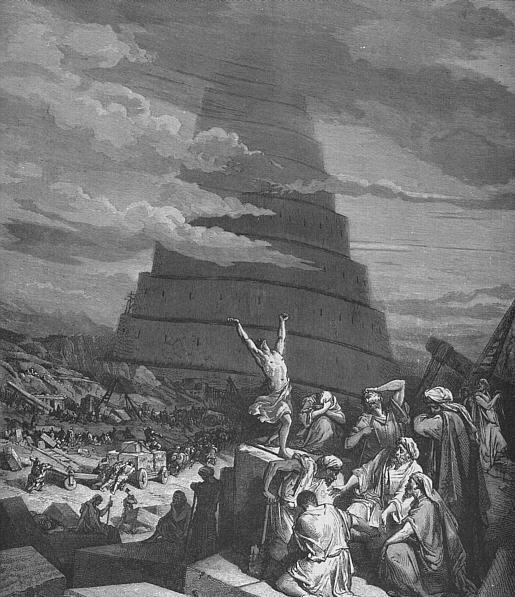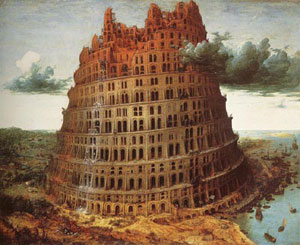
It will be necessary to spend a bit of time, in continuing our search to find the origin of Man, discussing the very nature of language itself. As we previously had to dig into the aspects of carbon and other dating, as we had to get to know the red shifts regarding long distances in space, and as we needed to find out a bit about the fossilization process – because all these were reasoned by us to be essential to any understanding of Science’s explanation for the origin of Man – so must we deviate from our direct goal regarding Creation.
The reasoning for this is as follows. There are easily hundreds, perhaps if we count all variations as separate tales, thousands of creation stories extant. The number of ancient texts available, and the quantity of our knowledge regarding the languages in which they were composed, while numerous are not by any means vast. There are also other problems, obvious but not always treated as obvious, such as those involving the deciphering and translation of existing material, and the problem of existing material yet to be deciphered.
It makes good sense to assume, I think, that so-called “oral traditions”, or the history of non-written communication between people, pre-dates any written artifact. I am hesitant to declare this fully only because it is entirely possible that in the same way written language might be a reflection of oral tradition, and phonetic writing a reflection of symbols, there is an also slight possibility that the earliest written languages, like cuneiform and hieroglyphics, were an outgrowth of a completely mental or telepathic language. It is therefore at least conceivable that oral communication “devolved” from a sort of silent communication.

Think of this beginning of languages in terms of the Biblical story of the Tower of Babel (or the Tower of Babylon) which, because it will eventually need to be told during this part of our search at some point, I will relay presently, albeit with a somewhat modified understanding compared to how the story is usually told. This is the legend those of us in the West know as explaining the origin of languages, or more specifically, the reason why there are more tongues in the world than one, and which appears in chapter 11 (1-9) of Genesis:
As we read the story we notice it is assumed that in the beginning Man spoke only one language. It is implied these early humans used communication very effectively, and that this verbal expression was the primary reason they were able to nearly reach the heavens. Using these universally understood words in a narcissistic way, and so by them even attempting to reach the heights of the gods—a metaphorical way of saying trying to be divine—Jehovah (YWH) said let us go down and confuse everybody, so that they can no longer understand each other. Hence, after that time we discover historically, and in quick succession, the emergence of other languages, such as Aramaic, Hebrew, Egyptian, Sumerian, Chinese, Linear B Greek, and so on. Take this line of thought a step further, and recall evidence from your own life, and it will be seen that this “failure to communicate” extends not just to those who speak different tongues, but even to those who speak the very same language.

This is the literal gist of the story, according to Genesis, and as an allegory it is full of other possibilities as well. For example, the entire take is quite possibly a parable of a kind, one which means to recognize the God-like potential in Man, and to illustrate what can happen if he uses these abilities for achieving power or personal gain. There is also implicit in this story a desire on the part of God or the gods to have Man spread out, perhaps to avoid disease and the like. This first dispersal accomplished, we find formed new “tribes” with unique languages, and often their own writing systems that, depending on where the emigres moved, reflected what new beliefs, adaptations, and characteristics were dictated by the regions in which they settled.
This place, named Babel, which we know today as Babylon, is located directly at the Tigris and Euphrates rivers, where Adam and Eve, the first human prototypes are said, by this same Genesis, to have had their beginning. Today it has been all but indubitably proven that writing, in the form of cuneiform, began in this area, and as further confirmation of the degree of Truth found in this story, that the king David and his son king Solomon came into the Levant from this general vicinity.
As for most of the Biblical legends, and those of similar kind found in the other most ancient of texts, this Babel Tower story is oftentimes considered “only” myth, yet more and more, as time goes by, we find many of these alleged legends have an actually tremendous amount of basis in real provable human history. The concept of myth, as the word is normally used, is descriptive of some story that is usually considered, at least literally, not true, just someone’s more or less illustrated theory attempting to, usually by metaphor or hidden meaning, explain the inexplicable.
New archaeological discoveries, and reinterpretations of some writings, carvings, arts and artifacts already discovered, however, are proving that there is more Truth to many of these legends than skeptics in these regards would like to admit. The excavations revealing the actual city of Sodom, the discovery of Herod’s Palace, the writings of Sennacherib confirming his military expeditions against Babylon and Jerusalem, the discovery of the underground tunnel used by Hezekiah to escape the huge army of Sennacherib, the library of Ashurbanipal the king of Assyria mentioned in Ezra, the reality of the king (Sumerian lugal) Sargon (sharu-khan) who “led the people of Israel into captivity” (no oppression here, as the king actually “…carried Israel away into Assyria, and placed them in Halah and in Habor by the river of Gozan, and in the cities of the Medes” [in Isaiah]), the discovery of the city of Sodom, and for that matter the proof of Pontius Pilate, are all just examples of events and people mentioned in the Bible that have been confirmed by Science and are now considered real history.
Then there is the massive lot of those people, places, and events mentioned in the Bible which may or may not be considered as being confirmed by excavations and archaeology, and so by Science. Among these are the alleged discovery of the palace of Abraham located in Mari on the Euphrates, chariot wheels found in the Red Sea, and the excavation of the city of Nazareth.
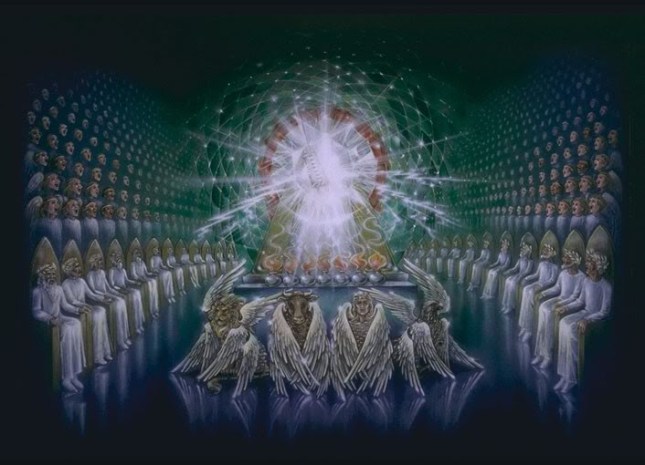
The Tower of Babel is not only interesting because of its explanation for the many different languages of the world, it also brings up further cosmogonic and theological issues, in particular the problem of those entities who came down with the Lord Jehovah to help him confuse everybody. These are, we can assume, those same beings with God, or who helped God, when He first created the world, and the same lot who found the human females “to be fair” and who “came to know” these women and by them produced “giants upon the Earth”. Are they cherubim and seraphim or some kind of angels, are they other gods, or does God merely speak of himself at times in the plural? We will consider this further later on.
For now, this problem with language regarding language we can see as affecting even our own current inquiry, prospectively wrong translations of the simplest scrolls and shards having profound implications for all subsequent research. Today, for example, there are no less than a dozen “literal” translations of Genesis, and many more translations of the translations, and the story of Babel is not exempt from the resulting and often important ambiguities. When we read the English word “Heaven” in the Bible, for instance, that word should actually be rendered “heavens” in the plural, and is very likely a misleading translation of the Hebrew words – mostly shamayam and shahak – that were meant to signify “sky”, “heights”, or “high places”. The Supreme Being mentioned in the Genesis stories of Creation, who we will get to properly later, is either Elohim, a plural (perhaps derived from the Babylonian/Sumerian El or the combination of Enki and Enlil), or YWH, YHWH, JWH, Jehovah, the Tetragrammaton, or Yahweh, a singular.
Too many people are still not aware either that the original Hebrew had no real vowels, and so where to put the vowels, which vowels, and how many ought to be placed, have too often been arbitrary designations, or left to be dealt with by the Aramaic translations. or more modern Hebrew (with vowels, as above). The God of Sumerian origin written in the Hebrew as “Bl”, for one example, could be Baal, Bal, Bel, etc.
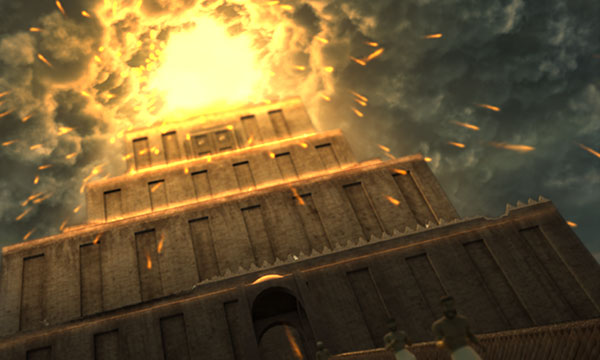
Our knowledge of ancient languages, like our knowledge of ancient Man, is exaggerated. There are still numerous scripts undeciphered, and the dating of these ancient texts one to another relies—although to a much less degree because of a greater availability of collaborating evidence, in the forms of artifacts, stele, papyri, and so on—on the same sort of speculative dating principles we discussed concerning Science. Without doubt, Science has much to say today about history and about language, perhaps too much.
Regardless then, for now, about the origin of Language, and with respect to our continuing search for the origin of Man, I will have to establish some sort of dating history, one based on the oldest surviving language samples. As we cannot analyze words spoken thousands of years ago (although we can try, and often laughingly do, attempt to pronounce, say, “words” that are merely pictures and which cannot be communicated by the spoken word), at least not any more than a painting can be said to actually tell a story, we must necessarily rely on the written record in conjunction with the ancient artifacts and other archaeological finds.
The creation stories we have to relate here will be placed in a rough chronological order based on the age of the language in which they have been first relayed. In other words, I will assume that the older the language the script in which the myth or tale is written, the older is the myth or tale. That this might not be the case, I will concede. It is entirely possible that the oral tradition of a language, and some people I will cite as having existed earlier, and so as being older than another, might in fact not be as old as one I will cite as coming later, or as being newer.
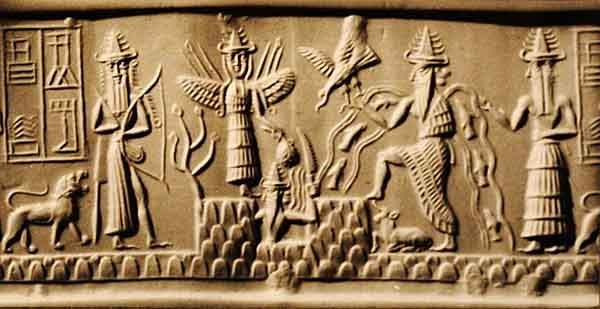
Nevertheless, chronological importance must be first priority and the general presentation format. This is because we will have to be guided by the common-sense premise that the older the myth, tale, story, legend, fable, saga, etc. about the origin of Man, the closer it is to Truth; about such things, what comes later can amount to no more than a corruption. Not merely this, but by examining these Creation stories chronologically, based on the best available estimates as to their antiquity, and with full consideration of the age of the languages in which they are composed, we may be able to more easily demonstrate our principal working thesis in these regards, namely, that all the Creation stories flow out of a common epistemological spring.
The ancient stories tell us that through the passage of time, namely because of the destruction of records, writings, cities, and whole civilizations, as well as the dispersals of peoples whether or not under the order of a deity, Man may have had to, perhaps over and over again, after each great catastrophe, had to pick through the rabble, rely on his feeble memory, and then try to interpret the remains in effort to rediscover the ancient thought that is his ancestry. Like the old “telephone game” where one person speaks a message intended to be relayed accurately down a line of people, a process which almost inevitably leads to the message being distorted by the time it reaches the end of even a short line, with enough time and distance historical accuracy suffers.

So, essentially, it is because of the absence of better alternatives that we must first attempt to place in a chronological order the languages of Man, in order to know where to begin our study of Creation. This being the immediate goal, before we decide our line of descent clearly we must make mention of those languages that the standing Science has determined to be the oldest of all. We should also mention before doing so that philologists, anthropologists, linguists, etymologists, and the like, are fond of terming some languages “proto-languages”, a system we will disregard for our purposes. Simply because we do not understand the language because there exists no Rosetta Stone or Behistun Inscription to decipher it, or because we can find no relation, this does not mean it was not a real language, or indicative of one.
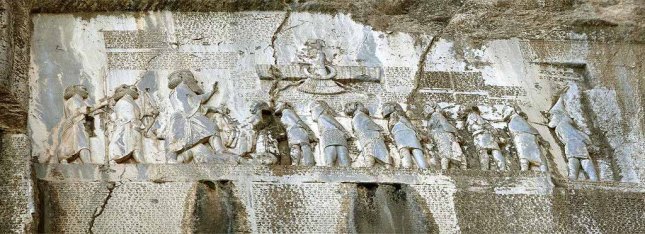
In a similar vein, but on the contrary, we should not accept that all ancient symbols known to us, particularly of the pictographic cuneiform and hieroglyphic varieties, or for that matter the Lydian, or Balkan (a.k.a. Tartarian) types, along with the many other inscriptions and glyphs of unknown origin, are writing at all. Some of these old “languages” quite possibly were intended to be no more than thought-provoking pictures, with no spoken correlates, and without doubt quite a few (if not most) of the oldest samples have been translated or interpreted incorrectly. Then of course there are the outright forgeries and hoaxes to consider, which slows down the research because they make us suspicious and hesitate to accept what is often otherwise very good evidence.
But without doubt certain language forms stand out from the others, and it is only by the dates attributed to them (rightly or wrongly) that we can begin an accurate chronology, and for our immediate purpose, place them in relation one to another.
The candidates for “oldest language” are few enough for us to discuss, albeit with some alacrity. These are, in no particular order, as follows.
The Sumerian cuneiform:
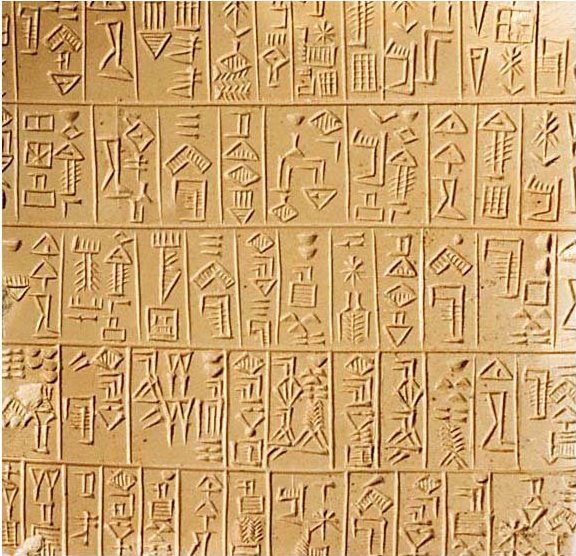
The Akkadian or “Eblaite” from just north of Babylon in present-day Iraq, theoretically an assimilation of what appears to be a more advanced Sumerian:

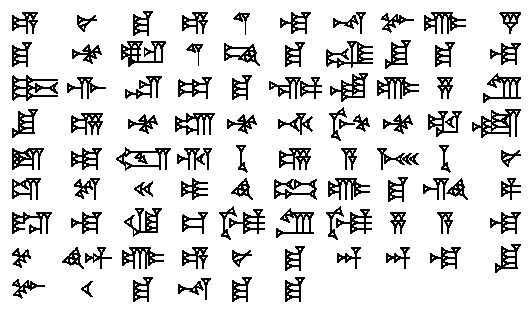
The “Canaanite”, from which comes Hebrew, from the Levant. These languages are the precursors to Hebrew, it is said, and include Phoenician, Moabite, Amorite, etc. In the photo below bottom characters are ancient, top are modern Hebrew:

The Greek or Minoan, from Crete as in Linear B, or from Greece itself, possibly from Thrace:
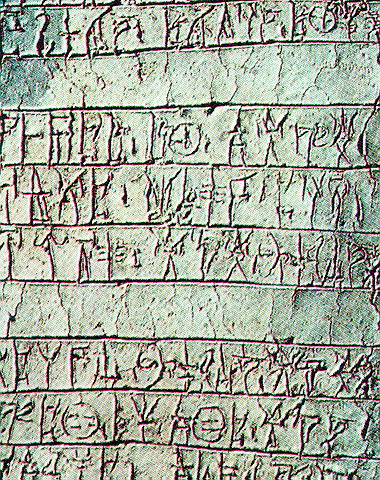
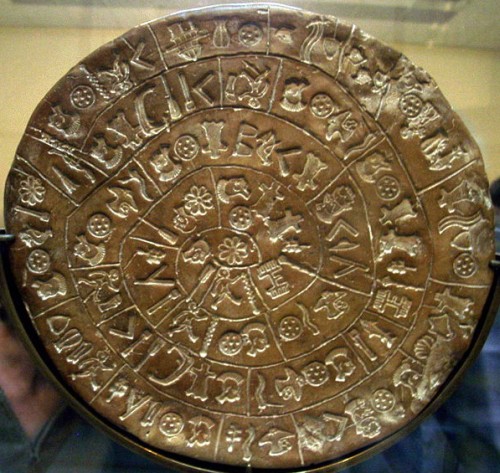
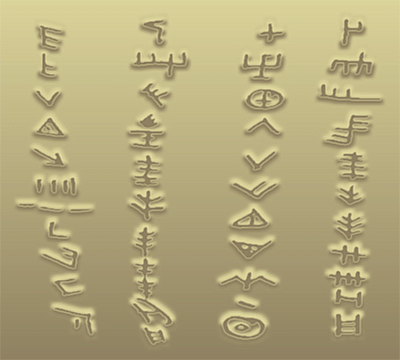
The Elamite from southwest present-day Iran, then southeast of Babylon:
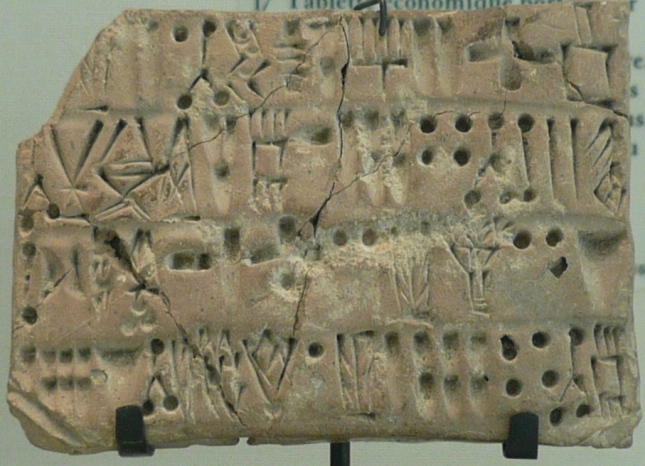
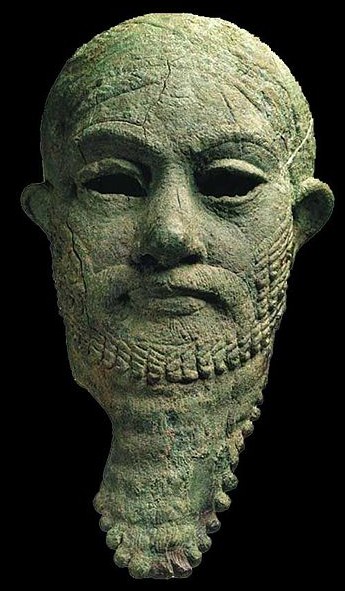
The puzzling situation of the language of Glozel, France:
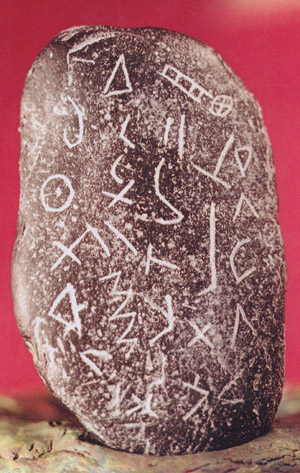
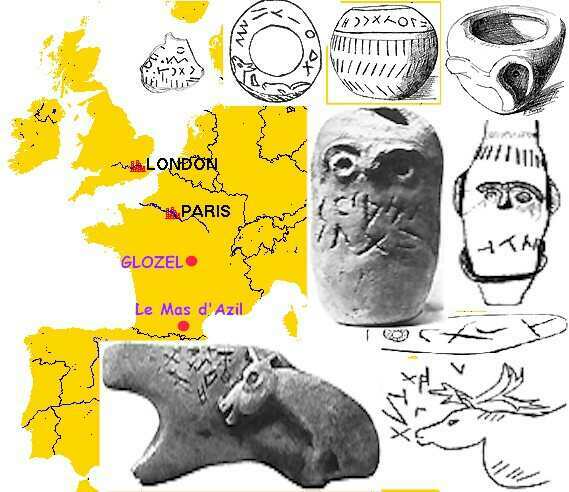
The old Chinese:
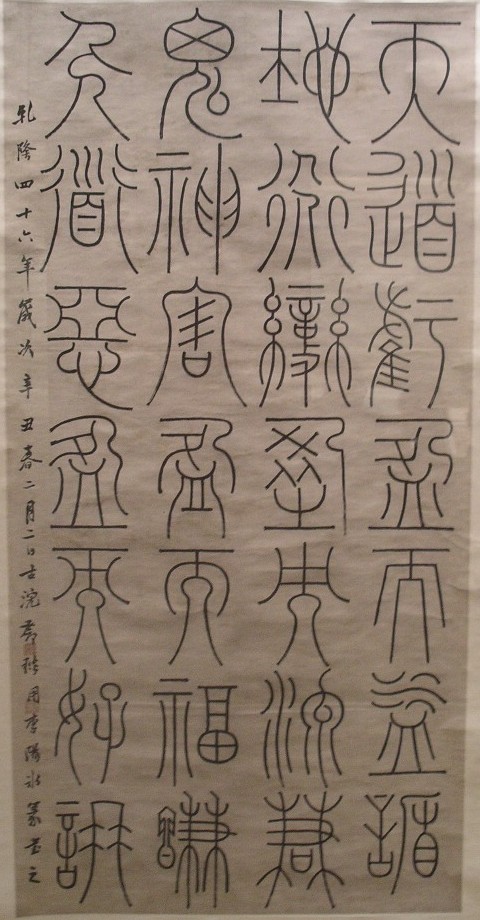
The languages of the Indus valley such as those having their origin in Sanskrit and those of the Iranian-Indian line;
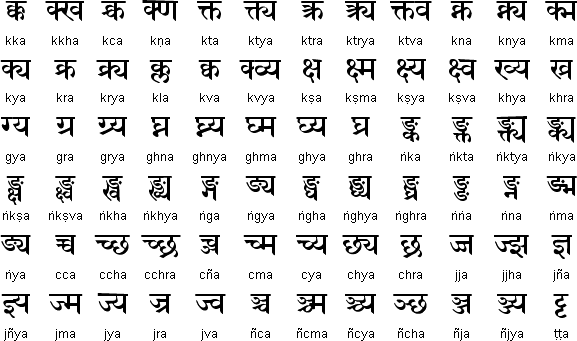
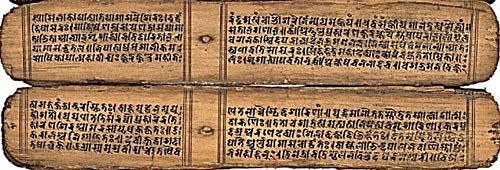
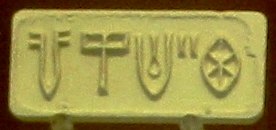
And of course, Egypt.
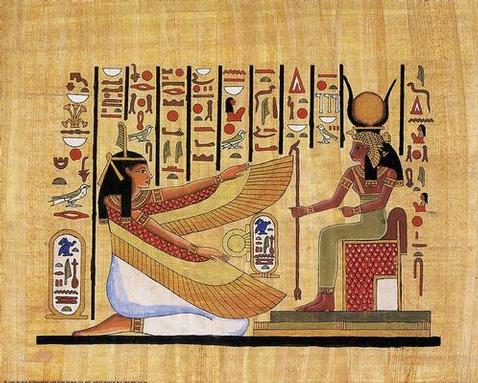
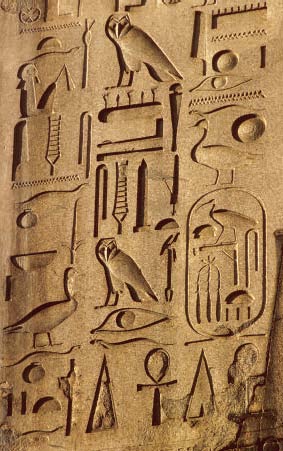

To be sure, were it not for Egyptian discoveries of late claiming a surpassing of the “circa 3000 BC” date of the former oldest writing found in Sumeria, the remaining evidence would overwhelmingly point to an advancing human race, along with its language, actually arising in between the rivers Tigris and Euphrates, as the Biblical account conveys. If indeed there was a Garden of Eden, located, we are told between these very same life-sustaining waterways, common sense would tell us that, it being the oldest region, we should find there also the Earth’s oldest relics, and, coincidentally, the world’s oldest language. And I believe that this is the case.
| “ | And a river went out of Eden to water the garden; and from thence it was parted, and became four heads. The name of the first is Pishon; that is it which compasseth the whole land of Havilah, where there is gold; and the gold of that land is good; there is bdellium and the onyx stone. And the name of the second river is Gihon; the same is it that compasseth the whole land of Cush. And the name of the third river is Tigris; that is it which goeth toward the east of Asshur. And the fourth river is the Euphrates. | ” |
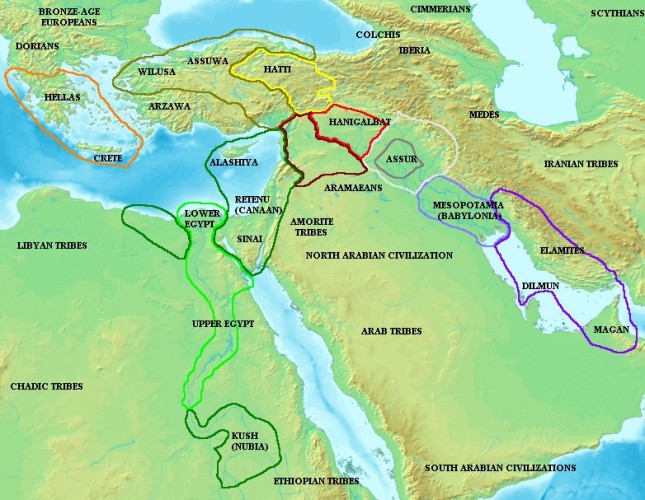
Evidence and common sense would naturally lead one to search for a singular language original to all, but this also need not be the case. Many books have been written, much research good and bad done, to establish all language as being of some common origin, for example, having Sumerian, Atlantean, Lemurian, or even extra-terrestrial beginnings. We have all seen the language trees, and the divisional branches established by the academics, such as Indo-European, Indo-Iranian, Oriental-Persian, and so on. According to “hard science”, as is the case whenever we get Science involved, the result of the story of Babel, like many it analyzes, becomes babble. Regarding human discourse, and rather than presenting confirmed, better theories than those granting Prometheus or Thoth or Enoch or Hermes credit for written communication, the Science about the origin of language, as usual, stalls and wavers at those crucial points when we need it most – just as with its handling of “Evolution”.
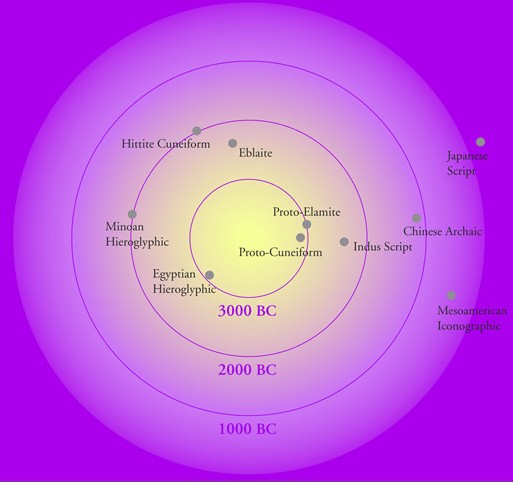
Here is a cut-and-paste from Wikipedia listing some of the anthropomorphic, legendary, and traditional historical characters most often cited as being the originators of language:
- Enos – Biblical patriarch, ascribed introduction of consonantal Ge’ez alphabet c. 3350 BC (?) according to tradition.
- Thoth – mythical Egyptian deity, ascribed invention of Egyptian hieroglyphics c. 3000 BC (?) according to tradition.
- Fu Hsi – legendary Chinese king, ascribed invention of Chinese characters c. 2850 BC (?) according to tradition.
- Cangjie – legendary Chinese scribe, also ascribed invention of Chinese characters c. 2650 BC (?) according to tradition.
- Enmerkar – legendary Sumerian king, ascribed invention of cuneiform c. 2300 BC (?) according to Enmerkar and the Lord of Aratta epic.
- Fenius Farsa – legendary Scythian king, ascribed invention of Ogham writing c. 2000 BC (?) according to tradition.
- Ogma – legendary Irish deified chieftain, also ascribed invention of Ogham writing c. 1875 BC (?) according to tradition.
- Cadmus – legendary Phoenician prince, ascribed invention of Greek alphabet c. 1350 BC (?) according to tradition.
- Evander – legendary Roman hero, ascribed adoption of Greek alphabet to Latin alphabet c. 1250 BC (?) according to tradition.
The oldest languages are also not far removed from the best accounts found in Talmudic tradition. Moab for example, from which derives Moabite, a very early Hebrew dialect, was a son of the then-drunk Lot and his oldest daughter. This is found in Genesis (19).
Should we imagine an adjustment to the literal Biblical calendar, say for global changes, calculations of “days” and “years”, errors of scribes, such as Manetho, and so on, we can see escalating that controversial and likely wrong figure of 4004 BC, to at least around 10,000 BC. As an exercise in, oh, artistic constraint, we could defend the working assumption of a definite Creation which occurred, if not in 4004 BC as Bishop Usher maintained, nevertheless not too long ago, less than 10,000 years ago, on the following grounds.
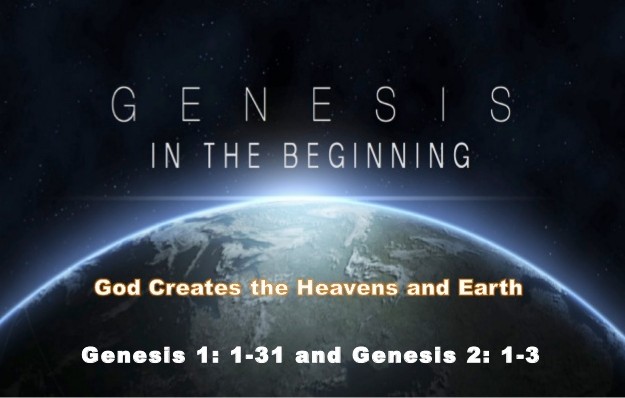
First, while it might not be the oldest language, it cannot be denied that ancient Hebrew, of especially the Canaanite sort, is one of the most ancient, even if it started in, as is likely, Sumeria or Mesopotamia, the land between the rivers. These ancient writings, also known as the Torah or Pentateuch, are frequently confirmed as a storehouse of accurate historical and chronological, if not prophetic, information. Not the exclusive property, or perhaps property at all, of the present day or so-called Jews as is widely believed, these oldest Hebrew texts are an amalgamation of the ancient traditions of all peoples.
The first Jews were originally a group of pagans from Sumeria, some of whose descendants eventually, following Abraham, became monotheistic, but most of whom went on to become those peoples known today as the Palestinians. Upon the establishment of a singular deity those particular Mesopotamian followers of Yahweh began to gain adherents of all races, and as the history goes the twelve tribes were eventually dispersed by God himself all over the world, and by this, along with the persecution and further scattering by the Romans, any original Jews may be said to have disappeared as a distinct tribe, their descendants today to be found amongst all the peoples, in all nations, of the world.
Until about the 2nd Century AD, when the Tanakh (Hebew Bible) and the Talmud were compiled, Judaism was all but non-existent, pockets here and there preserving the ancient oral traditions. In the 9th Century AD, year 965 or thereabouts, the Khazarian king Bulan decided to replace the phallus-worshiping practiced by the majority of his people (for reason, some say, of losing a major battle, but others say, for better climate) with the remnants of this Jewish religion. Instantly the number of new Jews in the world were thereby multiplied exponentially, and with each Jewish mother birthing by law more Jews by birth, it was not long before the entire region from the Caspian Sea to the Danube River were teeming with “Jews”.
We will leave this topic for now because much of the material it is not only tentative but sensitive. I hope to return to it in the future. What is important to understand for the time being, and why I bring it up at all here, is for you to keep in mind that the so-called Jews today have at best an only incidental and superficial relationship with the original Abrahamites. One could go so far as to say physically, mentally, ideologically, ethnically, ethically – really, religiously – today’s members of the Jewish religion are not by that alone in any way privy to the “Chosen People” spoken of in the ancient Hebrew texts.
As we will elaborate on later, the scriptures about these Chosen People are grossly misunderstood, and actually mean to favor no race or creed or color whatsoever. They are, to make it brief for now, meant to recognize those among us humans who are the best, meaning the most righteous, the most gifted, the most god-like people on Earth. These types are the chosen ones, the ones with, if I may be metaphorical here, the blood of the original Jew in him, they are Israel, and Israel is not a physical place on Earth. These men or women “chosen” could be Catholic, or Buddhist, or in fact any religion at all, even atheist, and I dare say maybe even belonging to the church of Satan. For what are these but names, of no importance when it is what one does and what one feels that determine what type of soul he or she is?

Regardless of the Truth regarding their origins, the first five books of the Bible, when taken as historical documents, hold their own against most competing claims of similar antiquity, and have their true, probably oral tradition origins way before there were any such peoples known today as Hebrew, or then as Aramaic (Syrian).
These first five books of the Old Testament – keeping in mind the verses about “chosen people”, and if we compensate for, or at least understand the patriotism of those who were later retelling the stories – can be seen as presenting a legitimate, universal, and comprehensive history of all Mankind. Before the Tower of Babel was destroyed we all men were sons of God, all alike of the same tribe, we could say. Something like this is indicated if we realize that all human beings living today, biologically according to Science, have the genes for humanity, and genealogically, according to to Genesis, are descendants of the bloodlines from Noah and his sons…and only indirectly, of Adam and Eve.
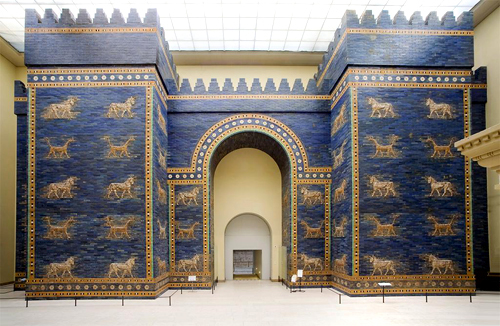
Ishtar Gate of Babylon, now in Berlin Museum
There are some gaps in our knowledge, notably regarding the then-cosmopolitan city of Babylon and the inhabitants of it, Ur, Akkad, Nippur, and many other early and now excavated cities. We know that Sumeria preceded Babylon as a kingdom, but we don’t know where the Sumerian people came from; when we make assumptions and answer Assur or Assyria, or Akkad, or Canaan, or in the area between the Black and Caspian Seas in northern Iran and present-day Georgia, or even from Greece or southeastern Europe, or Egypt, we have further problems locating the origination of those we assume to be the source.
The second reason I am going to begin with the literal Biblical account found in Genesis is because when it comes to writing there simply is no clear evidence for any scribed text arising before the time of Sumeria. On this same grounds, it is entirely possible that the world is millions or billions of years old, but that the creation of which we speak, the Creation, meaning that involving and including Man as we currently understand him, was a very more recent event. Each time the world is destroyed, we can imagine, it returns to a new state of beginning, and the account given in Genesis could be seen as descriptive of the most recent Creation, and in this be consistent with the results of our questionable dating methods.
Moreover, there are no really better alternatives, certainly not in volume of information. As for possible alternative jumping-off points for our discussion of Creation, and if we bite our tongues [sic.] and go by the existing, more or less consensus “expert” evidence as to their origins, we find the claimants to oldest language appearing, usually, in this order:
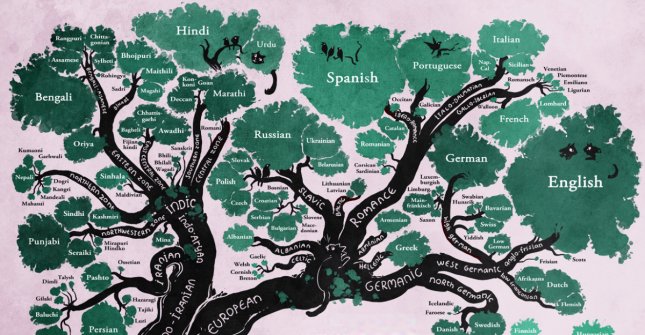
Right click, Open in New Window or New Tab to see larger
1. Sumerian Cuneiform (3400 BC)
2. Elamite Script (3300-3400 BC)
3. Egyptian Hieroglyphics (3200 BC)
4. Indus Script (2600-2700 BC)
5. Akkadian (2500 BC)
6. Proto-Sinaitic/Hebrew (2000 BC)
7. Cretan (Linear B 2000 BC)
8. Hittite (1700 BC)
9. Greek Alphabet (1600-1700 BC)
10. Old Chinese (1500 BC)
This sequencing, however, is speculative at best, and has supplied a lot of fodder for wise-acring theorists. Here to follow are some examples of the more extreme claims, which place writing at even earlier dates, and which involve much debate. Below is a relic of “Greek script” almost incomprehensibly dated to 6000 BC: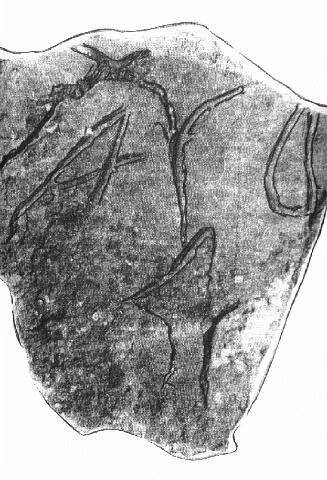 We should also mention in these regards the Glozel stones from France, which though still embattled in controversy, claim an antiquity of a whopping 7000-8000 BC. The language is still undeciphered, and possibly a hoax, but numerous tablets were found of this nature:
We should also mention in these regards the Glozel stones from France, which though still embattled in controversy, claim an antiquity of a whopping 7000-8000 BC. The language is still undeciphered, and possibly a hoax, but numerous tablets were found of this nature:
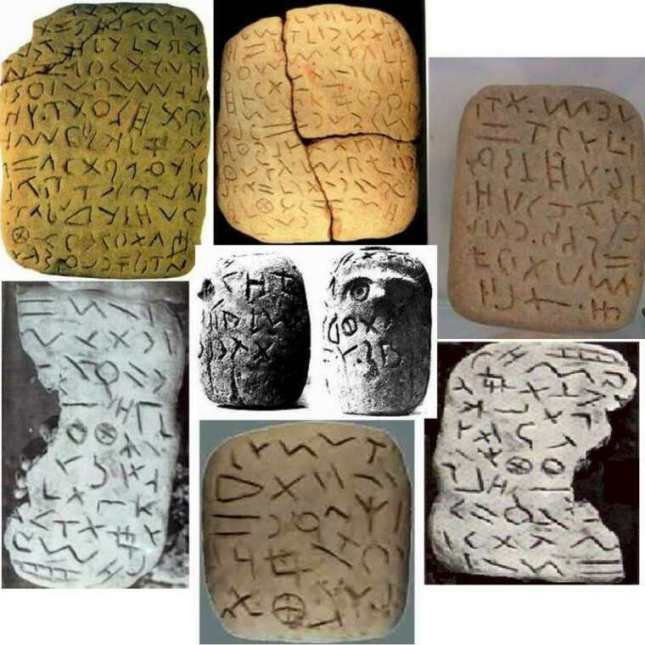
There are also the southeastern Europe claims to first language, known primarily as the Vinca script, and which have been found along parts of the Danube and vicinity, often considered Thracian in origin, and dated somewhere between 5000 and 7000 BC. Here below is a picture of one such artifact, and a transcription noting its hieroglyphic, Egyptian style, and then finally a facsimile of Vinca’s alleged primary characters:

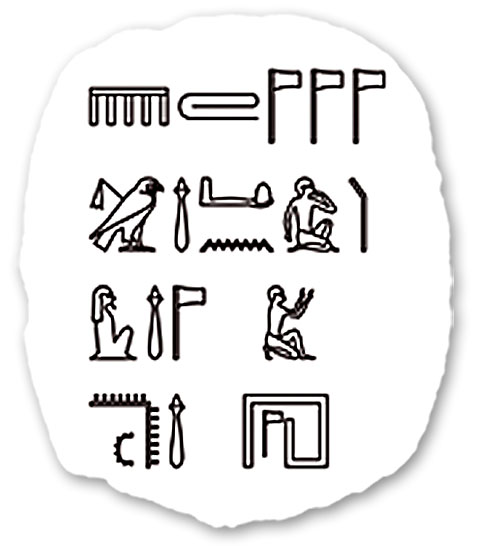

Not to be outdone, the Hebrews themselves have laid claim to “oldest writing” by finding what they say is the oldest example of Hebrew script, which looks a lot like the Greek “Alpha” and so Hebrew “Aleph” but which is dated only to around 1200 BC:
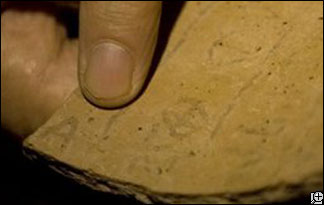
It does not help us, and comes as no surprise, that experts here do not agree, and it would not be unreasonable to dismiss all the exceptions straightaway. Immediately it becomes apparent that, as chauvinism and patriotic pride have distorted history, they have prejudiced and continue to desecrate facts about ancient writing. Europeans want Europe’s languages to be oldest, Chinese want Mandarin or Old Chinese, Iraqis want Arabic or perhaps cuneiform, Egyptians Coptic or Old Egyptian, Greek Linear A or B, Georgians Kartvelian, Iranians Persian, Mexicans Aztec, etc., and this bias has worked its way into our current understanding of history, and continues to stifle advancement. While we will not dismiss any evidence out of hand, and while we will not say these prehistoric inscriptions are not writing, we will assume that the successions established by academia are tentative, we will question their antiquity, and we will take for granted that the ages given for these various languages by their discoverers are clearly – not written in stone.
Either way, were we to change the date of Creation assumed by the Church fathers, to one more heeding of discrepancies in our historical notation of time, we could account even for these marginal remains. But, for the time being, we will consider these “oldest” inscriptions merely problematic, and stand by the evidence which claims that no language system on the Earth exists earlier than Sumerian cuneiform, which in its earliest (3500 BC) instances, and like many of the oldest inscriptions, has not yet been fully deciphered, and still falls within range of a fairly recent Creation.
Finally, I will justify the Creation stories, as found in Genesis, as our starting point, because even if they are not the first accounts of the origin of Man, they nevertheless contain in them at least the seeds—or remnants—of most of the alternative views found in other traditions.
We began this chapter by talking a bit about Babylon and its tower, a story which, like the flood, and like the killing of first-born children which were foreseen as a threat to the standing king (or pharaoh), has its parallels elsewhere. The ziggurat of Dru Antash in Iraq, mentioned in the Urdu Sumerian stories of Emmerkar, is considered today as identical to the tower of Babylon, although this has recently come under scrutiny, some critics going so far as to say it is an elaborate hoax.

Regarding “the Flood” story in general, perhaps the Babylonian Atrahasis version, or the Sumerian Ziusudra version preceded that of Deucalion of the Greeks, or the Xisuthrus version of late Babylon, and perhaps all are restatements, or maybe precursors, of the tale of Noah in Genesis, arguably all alike the Hindu symbol of Man, Manu, the Sanskrit correlate of Noah through Adam. The important thing to notice by the existence of the similarities is that while nearly all stories of all sacred books have their correlate, or even copy, in Genesis and the rest of the books of the “Old Testament”, it more and more seems apparent that there is additional information in this Old Testament, more than what the other ancient “books” contain.
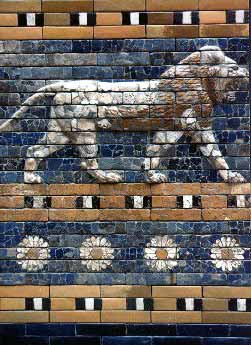
Now I can think of some objections to my taking this course, the first being all the usual pattering, yin-yang, and pseudo-science that has “proven” the (what I will somewhat ironically call the Creation stories in Genesis…) Genetic Creation to be “impossible”. The far bulk of this “proof” we touched upon in prior chapters, such as the whole problem with dating, limitations of our technology, the ever-present artist’s conceptions, reconstructions, gap-filling, guesswork, and so on. A repeat of our previous work applied to the whole of historical evidence of language would yield similar scholarly wobbling about every major point of contention. While I am reluctant, even after much reflection, to accept wholly yet myself this idea of a recent Creation, I think as an exercise in pursuit of Truth, and the Bible’s overall claims to Wisdom as echoed through its own commentators, or wise-acrers, we could do worse.
Let us then recite the accepted Bible story. Someone, oh about 600 BC or so, copied down the oral, legendary, and popular tales of Creation, originating from somewhere we can only guess, and put them down in writing that became, much later, Genesis. This historical occurrence would presume an already-existing vocabulary, or at least system of symbols adequate to such a task. These stories, for the most part, are confirmed by secondary sources, even exact copies of the same myths, in distant lands. Much of our human history and chronology is reliant upon this history, whether we like it or want it to be so.
Again, as a starting point for examining Creation myths, we could indeed do worse, which leads to another objection I can foresee with this, our method.

Undoubtedly, someone will read these preparatory words and think the author somehow wanting to grind his ecclesiastical axe, think me a Middle Easterner, or label me a “Creationist Nut” and what’s worse, by their ad hominem attacks, consider the matter closed. Others, perhaps of the psychobabble bent, might insist I am even what insist I am not, caught up as I am, they would say, in my own denial. Well since there is no real way to refute a charge such as “You are X in denial”, one of the silliest propositions yet by an ever-increasingly inane Science, irrefutable of course because it cannot be falsified, there is then no merit to the last charge, and no truth to the others. I state here and now, unequivocally and once again, that I seek only Truth, as I expect anyone following this melee to do as well. I have no doctrine I need to establish or confirm, nothing I need to deny. We have to begin somewhere, and so it will be with the Biblical account(s) of Creation that several billion inhabitants of this planet still believe. In the next chapter, we start with Genesis, as what could be a better place to start…than In The Beginning.
